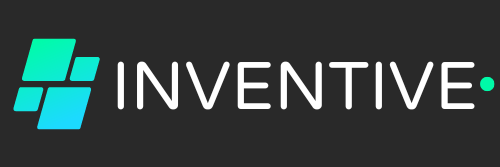Case Study: How to do Cybersecurity Across a Distributed Organization
Transforming Eight Healthcare Subsidiaries in Three Months
Overview
A group of eight subsidiaries of a healthcare company located in the New England area of the US faced a significant wake-up call when a cyber incident exposed vulnerabilities across their organization. With each subsidiary operating independently, using disparate technology stacks and security controls, the group realized they lacked the necessary defenses to protect against modern threats.
The cyber incident revealed the urgent need for a unified and robust cybersecurity strategy to safeguard their data, systems, and reputation. Over the course of three months, the organization partnered with us to design and implement a comprehensive security overhaul, delivering significant improvements to their cybersecurity posture.
The Challenge
The cyber incident highlighted several critical shortcomings across the group of subsidiaries:
🚨 Critical Security Gaps Identified
Fragmented Security Posture: Each subsidiary had its own approach to technology and cybersecurity, resulting in uneven levels of protection with some lacking essential security controls like email encryption, phishing protection, or endpoint monitoring.
No Centralized Oversight: The organization lacked a centralized cybersecurity strategy to ensure consistency, leaving them vulnerable to gaps in coverage and uncoordinated responses to threats.
Growing Threat Landscape: Phishing emails, ransomware, and email spoofing attacks were increasing in frequency. Without unified security policies, the subsidiaries struggled to detect and mitigate these threats effectively.
Operational Inefficiencies: Managing cybersecurity on a subsidiary-by-subsidiary basis was resource-intensive, and the lack of standardized tools made incident response slower and less effective.
The leadership team knew they needed a solution to streamline their cybersecurity efforts, implement proactive measures, and protect the organization from future incidents.
The Solution
To address these challenges, the organization partnered with a virtual Chief Information Security Officer (vCISO) to assess their vulnerabilities and design a tailored security strategy. Working closely with the leadership and IT teams across all subsidiaries, the vCISO implemented a comprehensive plan that standardized security measures and improved their overall defenses.
Three-Phase Implementation Strategy
1
Standardizing Security Controls
Real-time link scanning, email encryption, phishing testing, DMARC policies, and improved spam controls across all subsidiaries.
2
Advanced Security Enhancements
Multi-factor authentication implementation and SIEM system deployment for centralized threat detection and monitoring.
3
Operational Support
Onboarded a Managed Service Provider for round-the-clock monitoring, incident response, and helpdesk support.
Detailed Implementation
Phase 1: Standardizing Security Controls
- Real-Time Link Scanning in Emails: Implemented advanced email security tools to detect and block malicious URLs in real-time, significantly reducing the risk of phishing attacks.
- Email Encryption: Deployed email encryption solutions to safeguard sensitive communications and ensure compliance with regulatory requirements.
- Phishing Testing and Cybersecurity Training: Conducted regular phishing simulations to assess employee awareness and provided comprehensive training to reduce the likelihood of human error.
- DMARC Policies: Established Domain-based Message Authentication, Reporting, and Conformance (DMARC) policies to prevent email spoofing and enhance domain security.
- Improved Spam Controls: Strengthened spam filtering to minimize exposure to unwanted and potentially harmful emails.
Phase 2: Advanced Security Enhancements
- Multi-Factor Authentication (MFA): Mandated MFA across all subsidiaries to provide an additional layer of security for user accounts and sensitive data.
- SIEM Implementation: Deployed a Security Information and Event Management (SIEM) system to centralize threat detection, monitoring, and response efforts across the entire organization.
Phase 3: Operational Support
Recognizing the need for consistent operational support, the vCISO onboarded a Managed Service Provider (MSP) to provide:
- Round-the-clock monitoring and incident response
- Helpdesk support to address technical issues promptly and efficiently
The Results
The implementation of standardized controls and advanced security measures transformed the organization’s cybersecurity posture. Key outcomes included:
🎯 Measurable Security Improvements
Unified Security Framework: All eight subsidiaries now operate under a cohesive cybersecurity framework, eliminating gaps and inconsistencies.
Improved Threat Detection: Real-time link scanning, enhanced spam controls, and SIEM system significantly reduced exposure to phishing and cyber threats.
Enhanced Employee Awareness: Phishing simulations and training programs resulted in measurable improvement in employees’ ability to identify and report suspicious activity.
Faster Incident Response: Centralized monitoring through SIEM and MSP support ensured quicker responses to potential threats, minimizing downtime and operational impact.
Regulatory Compliance: Email encryption and DMARC policies improved compliance posture, reducing the risk of fines and reputational damage.
Efficient Resource Utilization: MSP onboarding streamlined operations, ensuring consistent coverage and reducing the burden on internal IT teams.
⚡ Rapid Execution: The entire transformation, covering eight subsidiaries, was completed within just three months, demonstrating the effectiveness of the vCISO-led approach.
Conclusion
This case study highlights how a distributed organization can overcome cybersecurity challenges by leveraging a vCISO’s expertise. By standardizing security controls, implementing advanced tools, and onboarding reliable operational support, the group of subsidiaries now operates with a stronger, more unified cybersecurity posture.
Ready to Transform Your Security?
Is your organization struggling with fragmented security or outdated controls?
Learn how our vCISO services can help you achieve the same level of protection and peace of mind.

